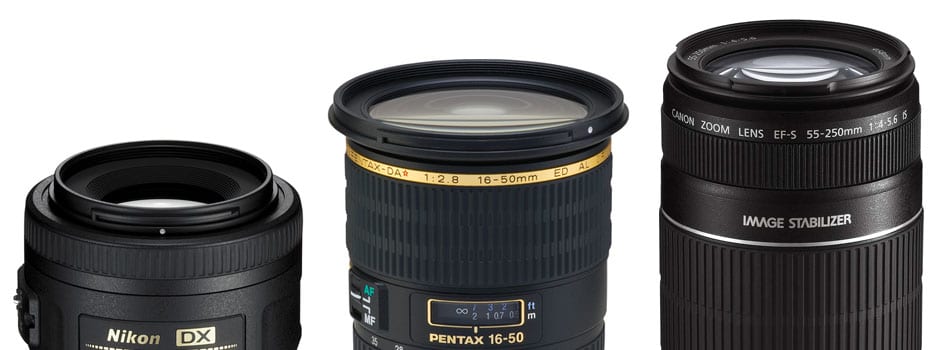What to Buy When You Outgrow Your Kit Lens
What should you look for when you outgrow the capabilities of your DSLR's 18-55mm kit lens?
 Credit:
Credit:
Products are chosen independently by our editors. Purchases made through our links may earn us a commission.
You bought yourself a shiny new DSLR last year, just as the leaves started to fall from the trees. But in no time, it was winter. Everything looked dead and grey, so after the holidays you put it on a shelf and didn't really think about it again until spring, when blossoms appeared on the cherry tree down the street. You took a few snaps of those delicate flowers and, just like that, you were in love. What a camera, you thought. What an upgrade from that dinky point-and-shoot!
As the summer wore on, your love only grew. You and your camera found new and exciting places to explore. You went everywhere together, even planning special trips just to shoot something interesting and unusual. Nothing could tear you apart. Gradually, you learned how to manipulate aperture, shutter speed, and ISO, gaining confidence as you went along. Soon enough you signed up for a Flickr account, joined group after group, and later purchased a SmugMug subscription to host your ever-growing portfolio.
But now summer has turned to fall, and you can't fight the growing realization that something is... off. Your bond with the camera, strong though it is, lacks the passion of months past. You're forced to acknowledge that you feel stifled by the camera. But no, something tells you. That's not right. It's not the camera's fault. The camera can only do so much. It must be the lens that's to blame. You were never really a fan, truth be told. The lens is just too plasticky, too limited in range, and the image quality—you just know you could do better. Anyway, you've got some money burning a hole in your pocket. Perhaps it's time to take the next step.
Telephoto Zooms
Best for: • Bright-light • Sports • Wildlife Travel
Recommended: • Canon: EF-S 55-250mm f/4-5.6 IS II • Nikon: 55-200mm f/4-5.6G IF-ED VR • Pentax: DA 55-200mm f/4-5.6 WR • Sony SLR/SLT: DT 55-300mm f/4.5-5.6 • Sony NEX: 55-210mm f/4.5-6.3" • Micro 4/3: Olympus 40-150mm f/4-5.6 R
Maybe you went ahead and bought the two-lens bundle when you picked up your DSLR in the first place. But if not, the logical choice for a low-cost, range-extending next step is to pick up a telephoto zoom that complements your 18-55mm kit lens. All of the major manufacturers make one, typically either 55-200mm, 55-250mm, or 55-300mm.
These lenses are generally comparable in performance to your existing kit lens, producing acceptable but not outstanding image quality. They're also similar in build quality—not exactly world-class, but good enough. In short, if you're happy with the images you get from your 18-55mm, you'll probably be content with the shots you capture using a complementary telephoto zoom.
While third-party manufacturers like Tamron and Sigma also make this type of lens, the performance and price gaps are typically so narrow that we would recommend going the first-party route, without exception.
Fast "Normal" Primes
Best for: • Street Shooting • Environmental Portraiture • Low-light Snapshots
Recommended: • Canon: EF 35mm f/2 • Nikon: 35mm f/1.8G • Pentax: DA 35mm f/2.4 AL • Sony SLR/SLT: DT 35mm f/1.8SAM • Sony NEX: 35mm f/1.8 • Micro 4/3: Panasonic 20mm f/1.7
After you've been shooting with your DSLR for a while, you may find that you habitually shoot at either maximum wide angle or full telephoto—those middle focal lengths just go unused. Don't worry, it's more common than you think, and could be a sign that you'd enjoy shooting with prime lenses.
What's a prime lens? Simple: It's a lens with a single, fixed focal length—no zooming! Why would you want such a thing? Well, for several reasons:
1. They often provide superior optical performance 2. They can have extremely wide apertures 3. They are usually smaller and lighter than zooms 4. They make you look like you know what you're doing
There are primes out there to cover just about every focal length, from 8mm fisheyes to 600mm extreme telephotos. Which one should you grab to get started? In the film days, a wide-aperture 50mm lens (often called a "nifty fifty") was the default choice. These lenses are still hot sellers today, but to get the same effect on your entry-level DSLR, you want is a 35mm lens. (This is because of the crop factor of the APS-C sensors used in these cameras, which requires you to multiply the stated focal length by—ah, nevermind, just read the Wikipedia article
Nikon, Pentax, and Sony all make 35mm crop-format lenses ideal for this purpose. Canon, oddly, does not—but they have a well-regarded 35mm f/2 full-frame lens that will serve just as well. On the Micro Four Thirds side, there are two Panasonic primes in the right ballpark: the 20mm f/1.7 pancake and the much more expensive Leica-branded 25mm f/1.4. The former is one of the best bang-for-the-buck lenses we've encountered. It's a 40mm equivalent when the mount's 2x crop factor is taken into account, but we actually think that's a great walkaround focal length. The 25mm f/1.4 is a spectacular lens with faster autofocus and better bokeh (background blur), but it costs nearly twice as much and is twice as big. Really, you can't go wrong.
Fast Standard Zooms
Best for: • Landscapes • Travel • General Purpose
Recommended: • Canon: EF-S 17-55mm f/2.8 IS USM • Nikon: 17-55mm f/2.8G IF-ED • Pentax: DA★ 16-50mm f/2.8 SDM • Sony SLR/SLT: DT 16-50mm f/2.8 SSM • Sony NEX: N/A* • Micro 4/3: Panasonic 12-35mm f/2.8 * Can use Sony SLR lenses w/ adapter
But let's say you don't need telephoto reach and aren't swayed by the siren song of prime lens shooting. Let's say you want vastly improved image quality while retaining the flexibility of a zoom. The solution you're looking for is a fast, fixed-aperture standard zoom. These lenses feature f/2.8 maximum apertures throughout the zoom range, making them ideal for low-light action (sports, etc) and shallow depth of field photography.
Again, alternatives are available from third-party companies, and they actually come in handy in this category. While the Nikon or Canon fast standard zooms may cost well in excess of $1,000 or $1,500 each, Sigma and Tamron's equivalents cost about half as much.
We've recommended first-party glass in the table above, but if your budget won't stretch that far, we strongly suggest you consider Tamron's 17-50mm f/2.8 (available for Canon, Nikon. Pentax, and Sony SLRs). Generally, we prefer the older "A16" (non-stabilized) version of this lens, since it seems to be slightly sharper, focuses faster, and costs less. If think you really need image stabilization, the newer model "B005" is still a fine choice.
